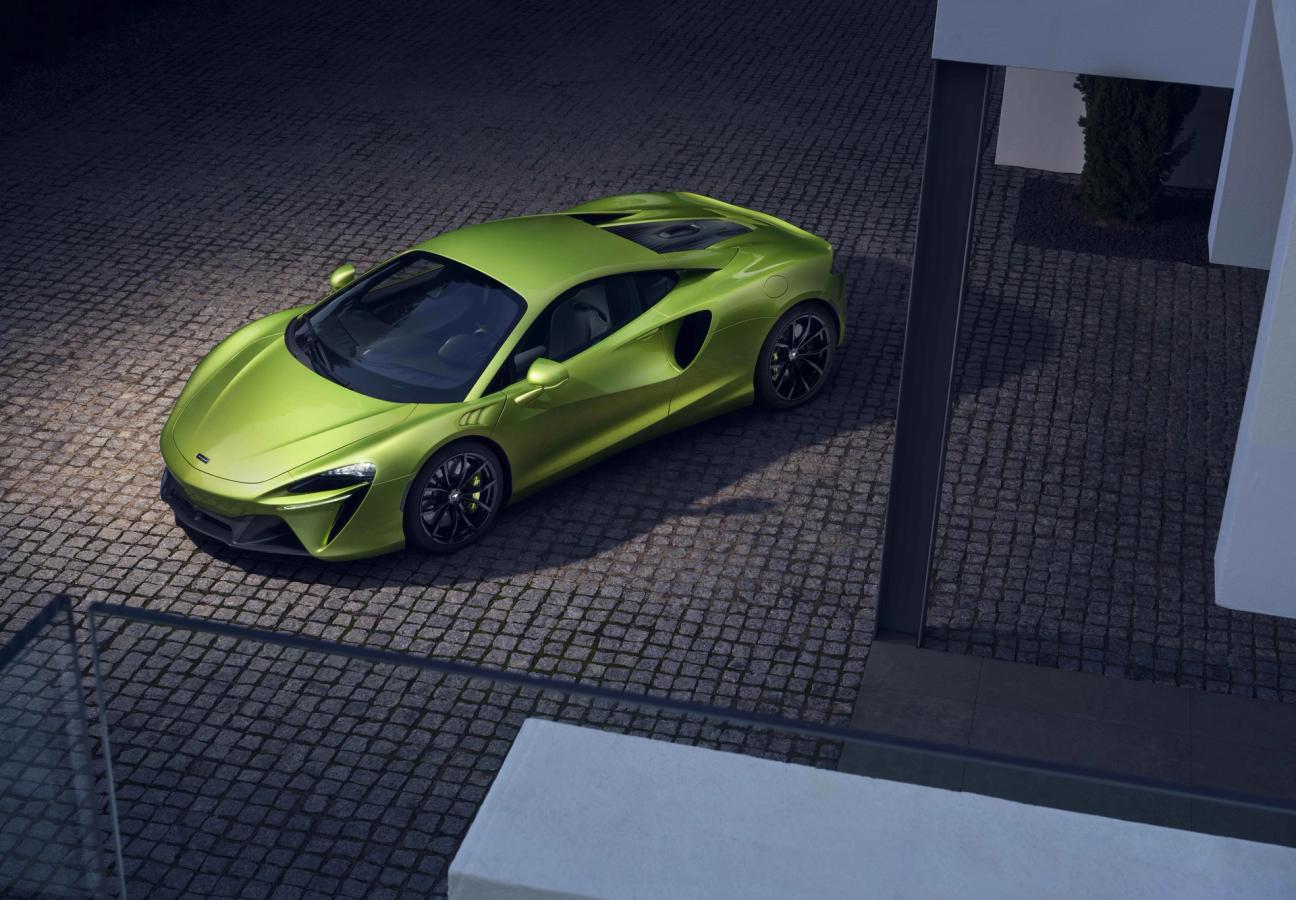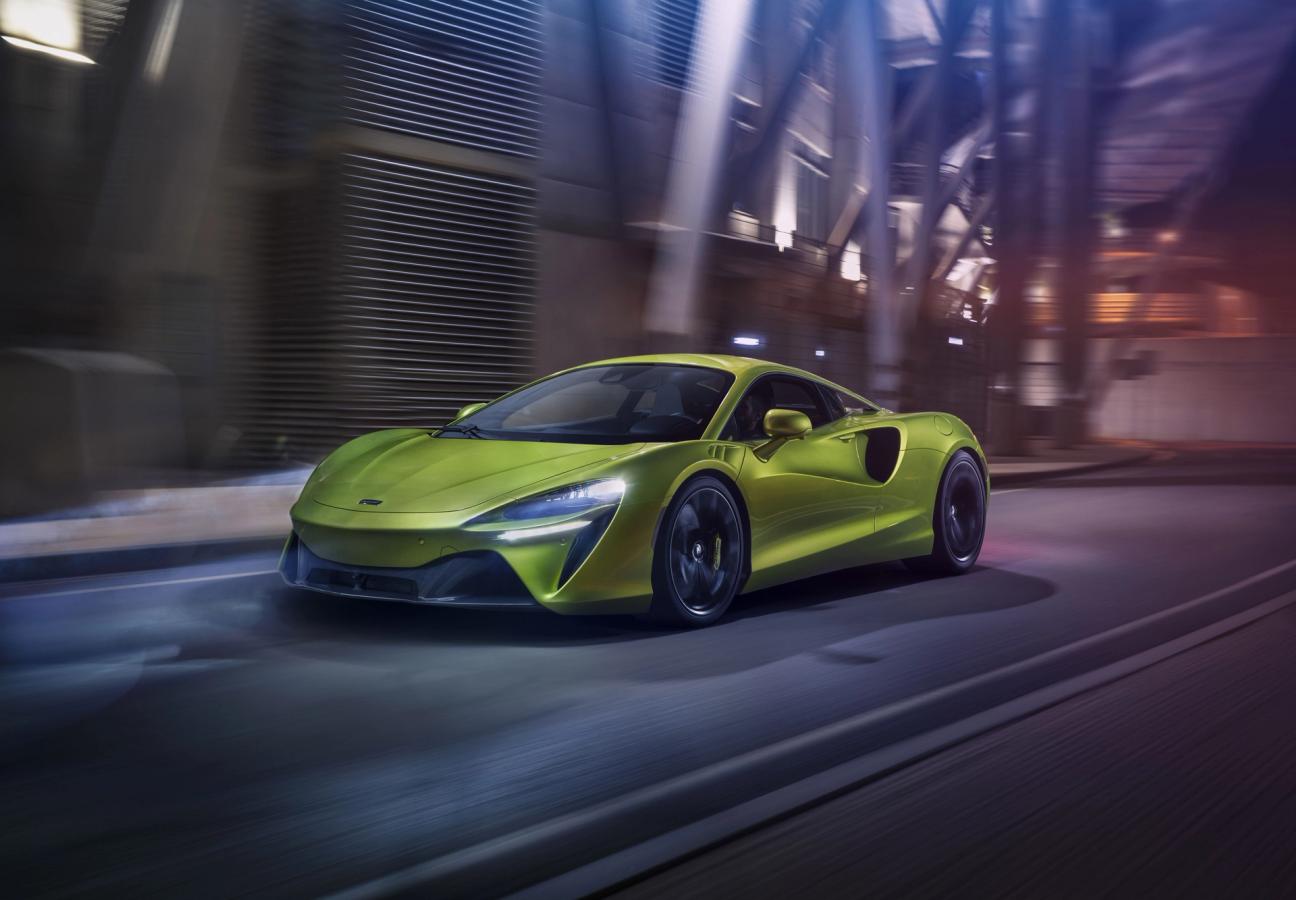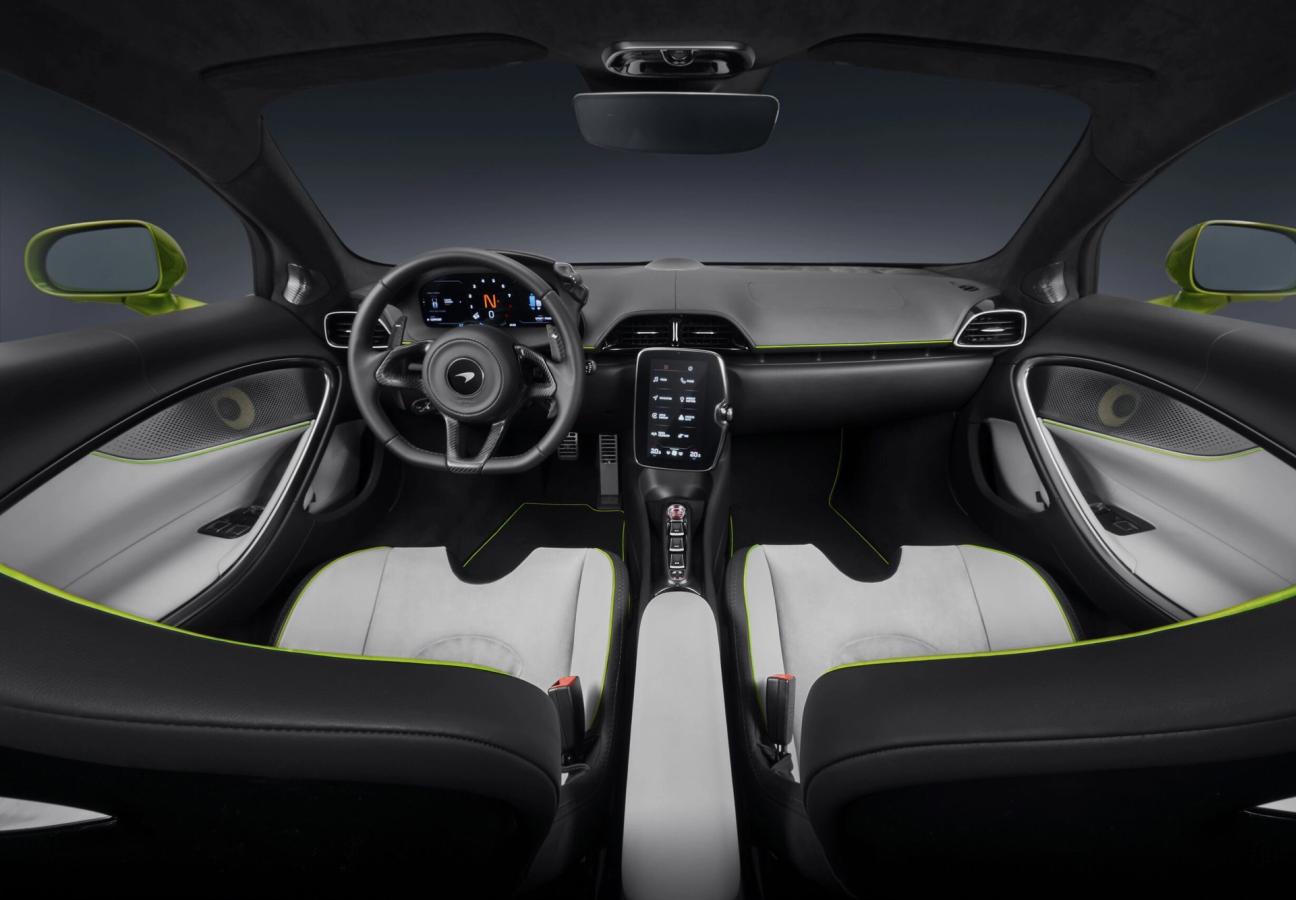

Words: Jonathan Wells
McLaren’s slick new hybrid supercar — all sweeping lines and squinting lights — has been turning heads. Its name, on the other hand, has been raising eyebrows. The ‘Artura’? Now that’s an odd choice. The Woking-based automaker usually keeps things simple. No-one ever questions names like ‘P1’ or ‘720S’. But ‘Artura’? That’s a new type of name.
But then this is a new type of McLaren. The British brand’s first hybrid, the Artura was announced back in November. It will be the first McLaren with a V6 engine, the first fitted with the brand’s new carbon-fibre chassis and the first non-limited edition with such a distinctive, different name. McLaren is moving with the times — and, to introduce you to Artura, we’ve found out seven key things about the new model below…
It is McLaren’s first PHEV

All these acronyms, eh? BEV, PHEV, HEV — it can get confusing. So let’s simplify things. The McLaren Artura is a PHEV, or ‘plug-in hybrid electric vehicle’. That means it can be driven on electric power alone, although only for 19 miles. But the brand hasn’t just tacked an electric motor onto an existing powertrain. Instead, McLaren has ditched its existing twin-turbo V8 and replaced it with an all-aluminium 3-litre V6.
With electrical assistance, the Artura will have an enviable 671 horsepower in total — giving it a punchy top speed of 205 mph and a 0-60 time of under three seconds. That’s impressive stuff.
The bodywork is ‘shrink-wrapped’ around the car
Not our words; those of McLaren’s Design Director, Rob Melville. When designing the Artura, Melville and his team split the process into three phases. They began with ‘purity’, and the challenge of keeping McLaren’s DNA running through the new design. Second came ‘technical sculpture’, or trying to ensure the car looked as sleek as possible.
The carmaker ensured this by reducing the number of shut-lines around the car, carefully sculpting new air intakes and retaining McLaren’s ‘signature hammerhead line’ by deeply recessing the front LED headlights. The third and last step was to refine the ‘functional jewellery’ of the car — accessories and accoutrements from those slim almond-shaped rear lights to an unusually high-mounted exhaust.
Despite the battery, it’s incredibly light

Add a battery to anything, and it’ll also add a lot of weight. But, thanks to some nifty engineering and mechanical wizardry over at McLaren, the Artura actually weighs just 46 kilograms more than its predecessor, the 570S. And that’s chiefly because it inaugurates a new carbon fibre chassis called the MCLA (McLaren Carbon Lightweight Architecture).
But that’s not the only weight-saving measure. Despite the extra weight of the lithium-ion battery pack, McLaren stopped the scales tipping by using both lightweight aluminium and a ‘zonal domain-based ethernet architecture’ (a less wire-heavy electric system). The result? The Artura weighs just under 1,400 kilograms in total — almost half a ton less than an Aston Martin DB11.
The Artura’s gearbox may be its most exciting feature
Hear us out. Gearboxes aren’t usually the sexiest part of a supercar — but the Artura is packing some seriously cutting-edge kit. It’s a ‘tri-clutch’ — which, yes, means it has three clutches. Two are responsible for shifting through the car’s eight distinct gears, and the last helps disconnect the engine from the transmission when you switch to solely electric power.
Another gear-related innovation of the Artura: it doesn’t have a reverse. Instead, like the Ferrari SF90 Stradale before it, McLaren’s latest accelerates backwards using the electric motor alone. And that’s why the gearbox, despite having one more gear than the previous seven-speed McLaren models, is so compact — and so much lighter.
It will never, ever, ever run of out charge

Hold on a second, didn’t we just say that the Artura only has an electric range of 19 miles? Yes, we did. But, thanks to its axial-flux e-motor — and the fact that the engine can be used to charge the batteries — the McLaren Artura’s system will never let the car run out of electrical charge. It’s a neat trick.
The battery itself, the carmaker says (which is positioned under the rear of the passenger seat) can charge up to 80% of its full capacity in just 2.5 hours.
It’s also been fitted with brand new rear suspension
The new bells, whistles and components keep on coming. Along with the MCLA and ethernet wiring rig, McLaren’s new Artura has also been fitted with a new style of suspension.
Aiming to allow for more composure on the road, the new rear suspension comprises of a wishbone at the top, paired with a multi-link set-up below. This allows for more camber and stiffness while driving on roads — but also more stability on a racetrack, especially under heavy braking.
The interior remains largely the same

There’s a lot of new bits and pieces making up the McLaren Artura. In fact, the British carmaker claims that the supercar is constructed from 98% new components. It’s rather surprising, then, to peer inside the cabin, where the latest model looks very… samey?
True, there’s been a push to increase quality of materials used, and there’s no longer an ‘active’ button to peruse your different driver modes. But the Artura’s interior, by-and-large, looks very similar to that of the 570S. There’s a central screen, an almost identical wheel design and that same inimitable ergonomic relationship between steering wheel, seat and pedals. But why should McLaren have innovated for the sake of innovation? If it ain’t broke, after all…
Looking for more modern British motors? Aston Martin’s Marek Reichman explains how he designed the DBX…
Become a Gentleman’s Journal member. Find out more here.


